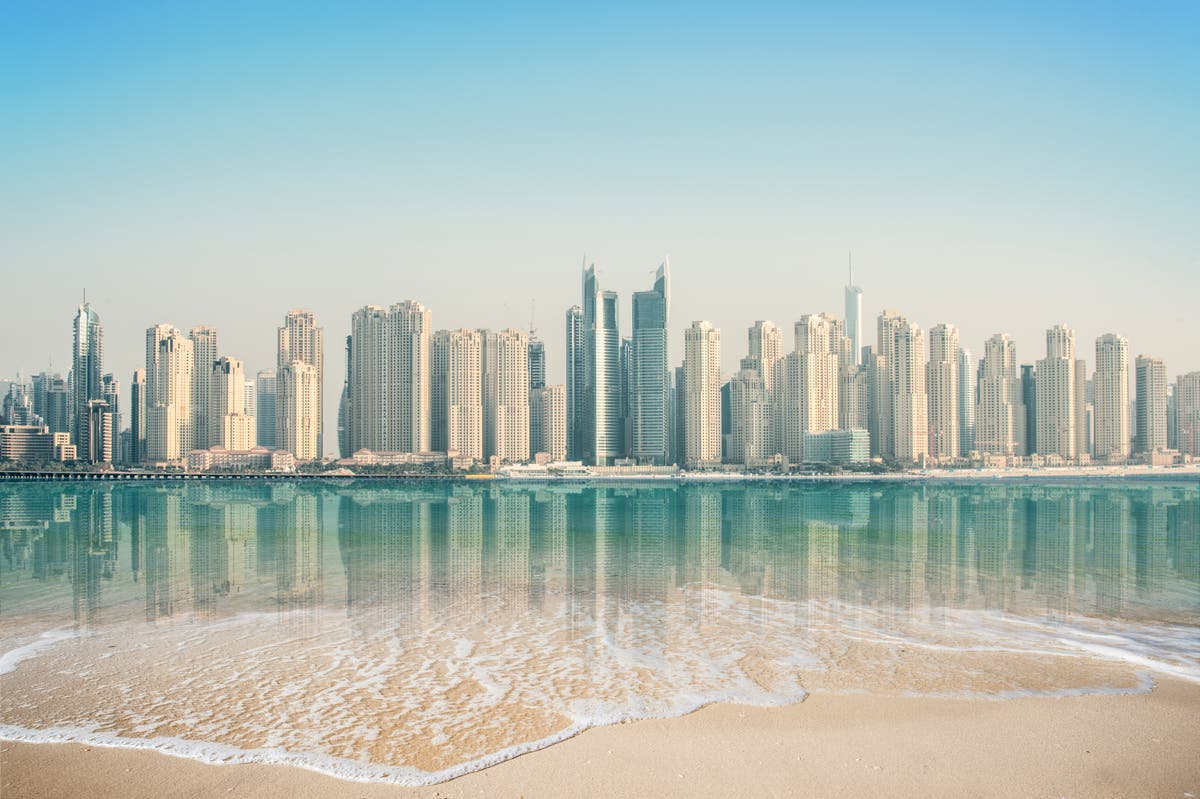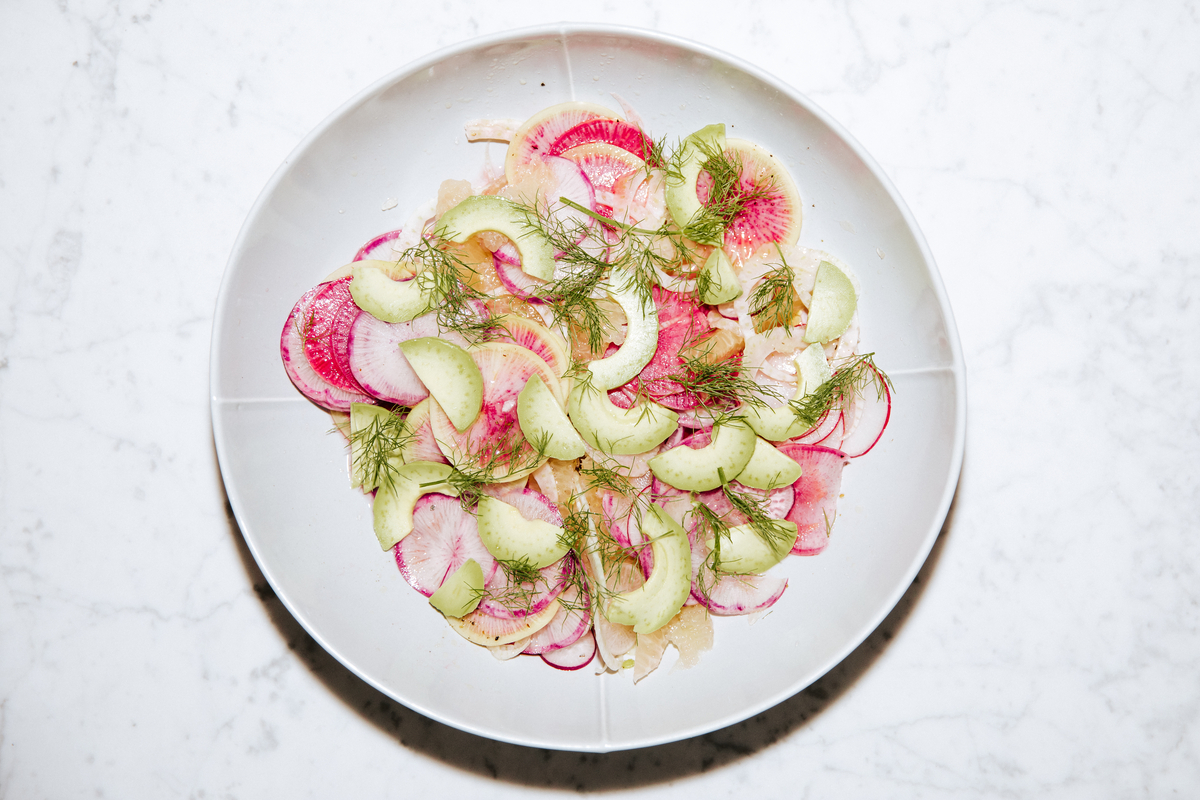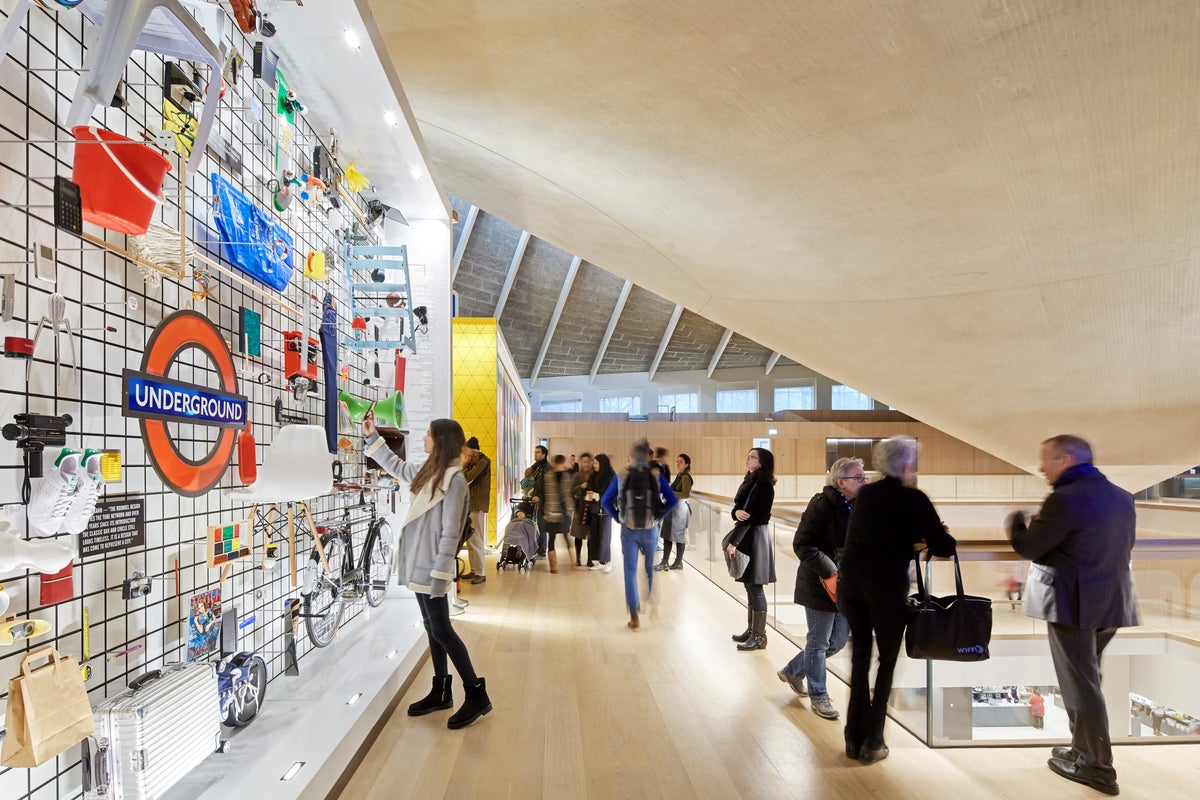Median household income in S’pore crosses S$10,000 per month as inequality keeps decreasing
This marks an increase of over 6 per cent from 2021, but drops down to just a 0.2 per cent increase when accounting for inflation.

Singapore’s Department of Statistics has just released its annual Key Household Income Trends report for 2022 (you can read it in full here) as a landmark milestone of S$10,000 per month was reached last year.
This figure refers to median monthly income from work per resident household (so, not including foreigners), inclusive of employer’s CPF contribution.
 Image Credit: Singapore Department of Statistics
Image Credit: Singapore Department of StatisticsIt’s over 6 per cent more than in 2021, although inflation has all but erased this increase in real terms to just 0.2 per cent.
However, we have to be mindful of the changes in household structure (i.e. how many people live together), so a more accurate measure would actually be household income per each member, which has increased by 2.6 per cent when accounting for inflation.
Poor getting richer, rich getting poorer
An interesting trend has emerged in recent years, with third one in a row where the wealthiest 10 per cent of Singaporean households actually report a drop in real annual income, while the poorest 10 per cent saw theirs jump by 10.1 per cent in real terms (a whopping 15.6 per cent nominal) for each member.
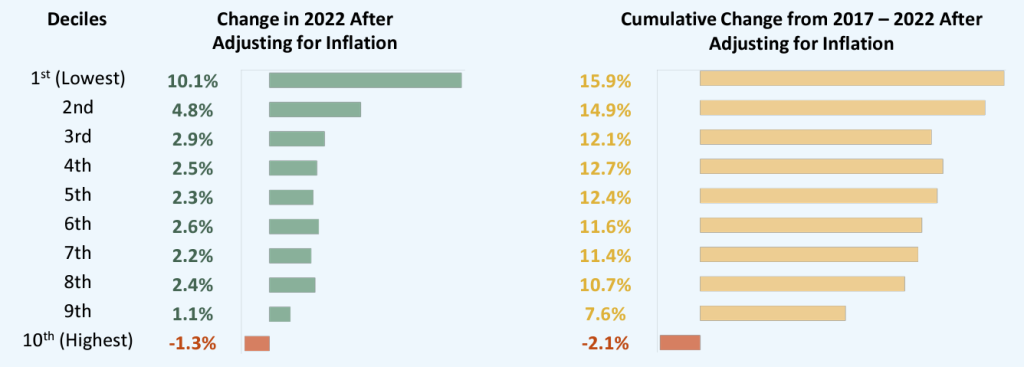 Average Household Income from Work Per Household Member After Adjusting for Inflation / Image Credit: Singapore Department of Statistics.
Average Household Income from Work Per Household Member After Adjusting for Inflation / Image Credit: Singapore Department of Statistics.Cumulatively, the top 10 per cent saw their real incomes from work drop by 2.1 per cent over the most recent five year period, with most of the rest recording double digit growth instead.
It’s small wonder, then, that Gini coefficient — however imperfect, academic measure of inequality — has been going down consistently.
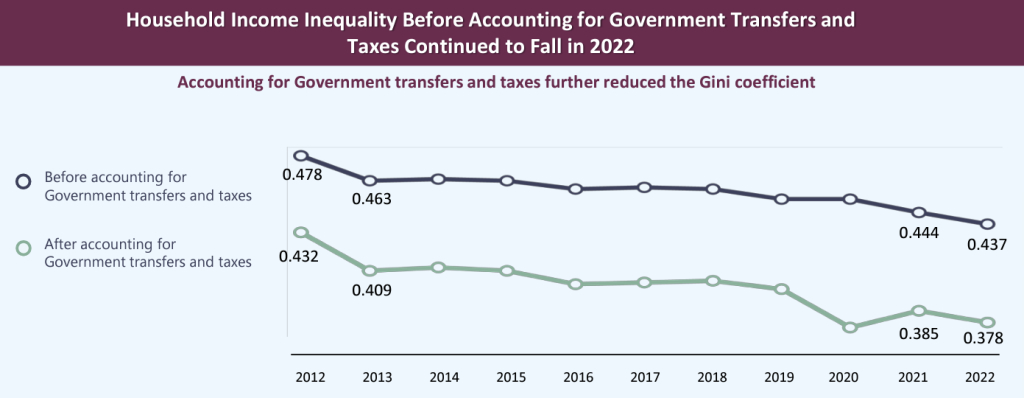 Image Credit: Singapore Department of Statistics
Image Credit: Singapore Department of StatisticsOver S$18,000 in government transfers
This decrease is helped in particular by government support which amounted to S$5,765 per household member, or about 10 per cent more than in 2021, on the back of enhanced measures aimed at cushioning the impact of inflation and incoming GST increase.
At an average size of 3.15 people this adds up to S$18,160 in redistribution from the national budget.
Since smaller households also tend to be the poorest, it’s no surprise that 1- and 2-Room HDB dwellers were the top recipients, at over S$12,000 per member last year – or double what other HDB households receive.
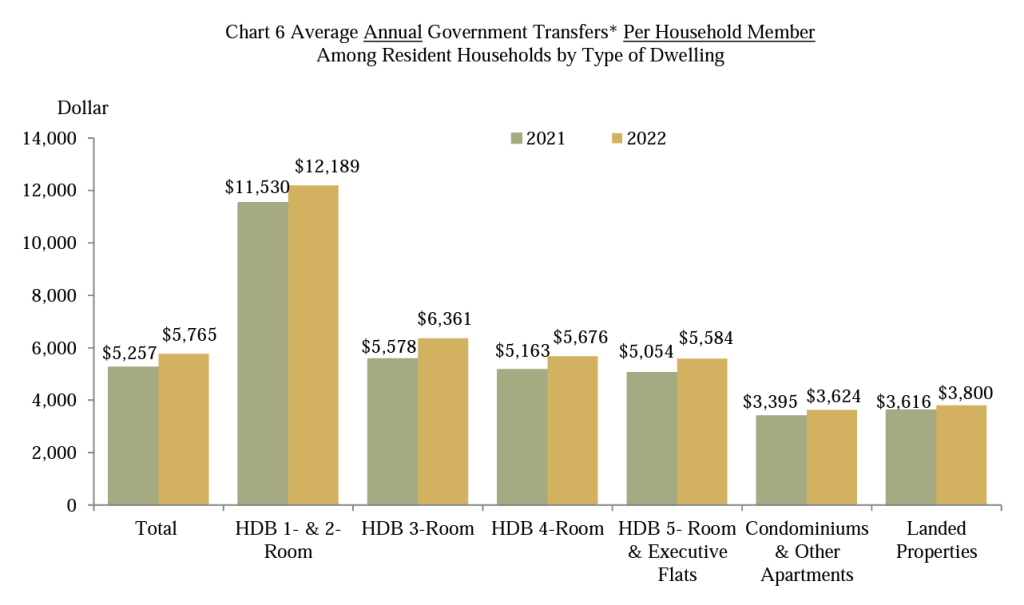 Image Credit: Singapore Department of Statistics.
Image Credit: Singapore Department of Statistics.Incomes double in 15 years, outpacing the economy
Singaporeans are about twice as wealthy in 2022 as they were in 2007, when median income per household member was just S$1,547.
Last year it reached S$3,287, after crossing the S$3,000 mark in 2021 – for a cumulative increase of 112 per cent in 15 years.
Interestingly, however, local incomes outpace the economy, which has grown by only 71 per cent in the same time frame – from S$59,400 per capita in 2007 to est. S$101,500 last year.
This may suggest that local labour is getting a bit expensive for what it produces (although this measure is somewhat imperfect, given that many of the wealthiest people do not draw high incomes, drawing value from asset appreciation instead).
It’s notable, however, how resilient Singapore has proven to be in that time, surviving the financial meltdown of 2008/09 and now the combined impact of COVID-19 pandemic and associated economic woes of high energy prices, galloping inflation and disruptions to supply chains, managing to achieve not only remarkable growth but also lifting up the poorest in the process.
Featured Image Credit: Dreamstime

 UsenB
UsenB 







